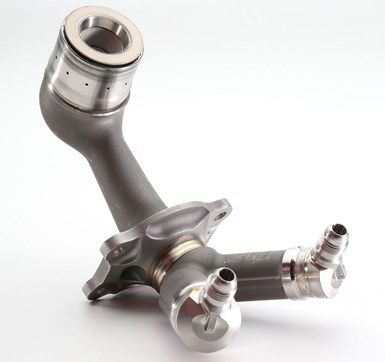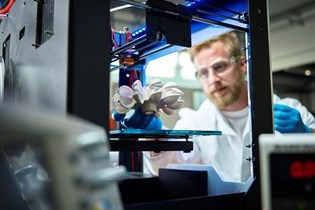Biden Highlights Manufacturing With Additive Initiative
President Joe Biden is set to announce AM Forward, an additive manufacturing initiative, during a visit at United Performance Metals in Cincinnati, Ohio.
Share





Takumi USA
Featured Content
View More

Hwacheon Machinery America, Inc.
Featured Content
View More



ECi Software Solutions, Inc.
Featured Content
View MorePresident Joe Biden is expected to announce during a visit to Cincinnati, Ohio, on Friday that five U.S. manufacturers have made commitments to purchase additively manufactured parts from smaller, U.S.-based suppliers. Biden will make the announcement from United Performance Metals, a specialty metals solutions center serving customers in industries such as aerospace, defense, space, fastener, medical, power generation, oil and gas, semiconductor and many others.

The LEAP engine fuel nozzle, pictured here, is often assumed to be the first part that GE Aviation identified for additive manufacturing (AM) and produced this way. But the company printed T25 sensor housing units for more than 400 GE90 engines well before it printed its first LEAP fuel nozzle tips. Photo: GE Aviation
GE Aviation, Honeywell, Lockheed Martin, Raytheon and Siemens Energy are the initial participants in AM Forward, the White House initiative that aims to strengthen domestic manufacturing and improve supply chain issues through the adoption of additive manufacturing. In addition to direct purchasing, the five manufacturers are also committing to training their suppliers’ staffs on additive technologies, providing technical assistance and engaging in the development of common standards and product qualifications.
According to the White House statement, “AM Forward is a completely voluntary compact open to any OEM to participate, provided they are willing to make public commitments to support their suppliers’ adoption of additive capabilities.”
What is Additive Manufacturing?

“Additive manufacturing” (AM) describes the use of 3D printing to make functional components, including tools and end-use production parts. Unlike “subtractive manufacturing” processes such as machining, where parts are created by removing material, additive manufacturing builds geometries by “adding” feedstock such as filament, wire or powder. Read more
































